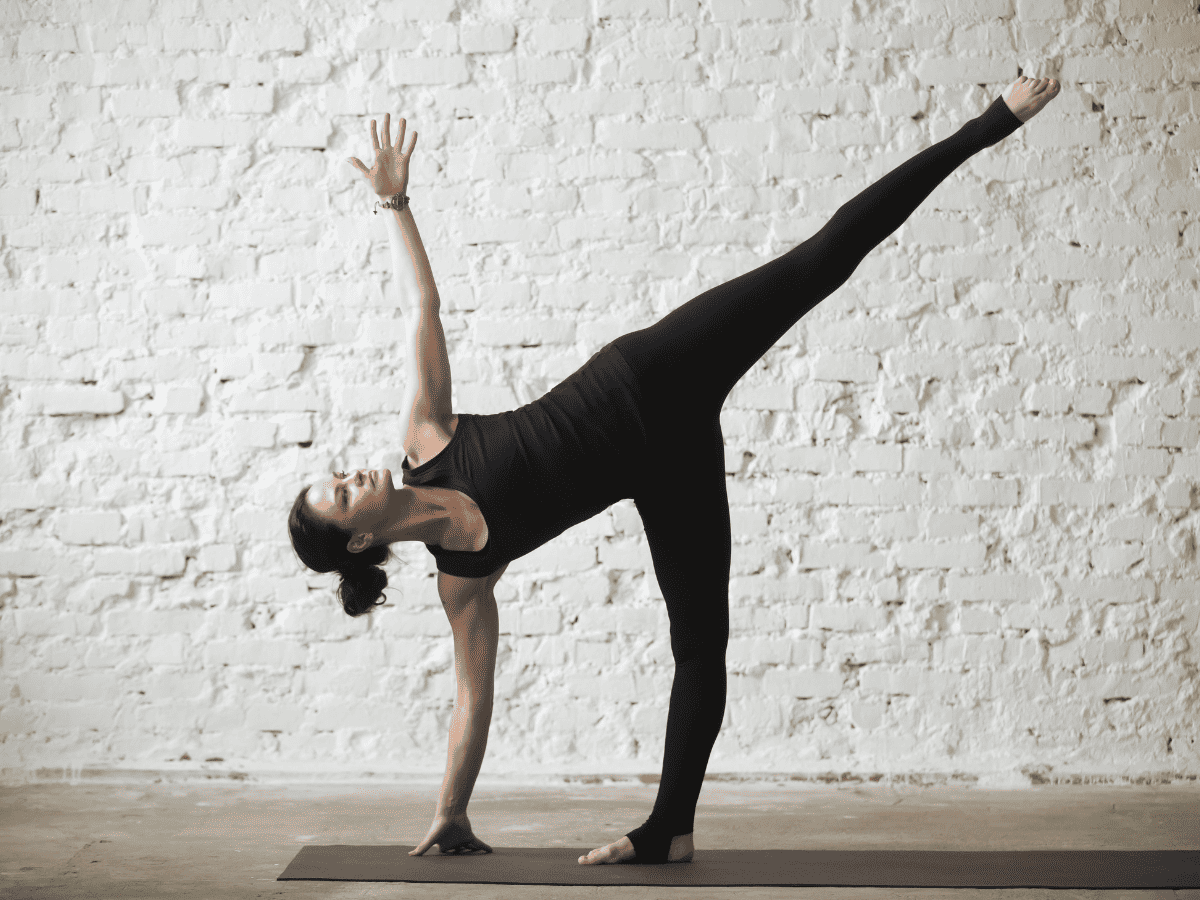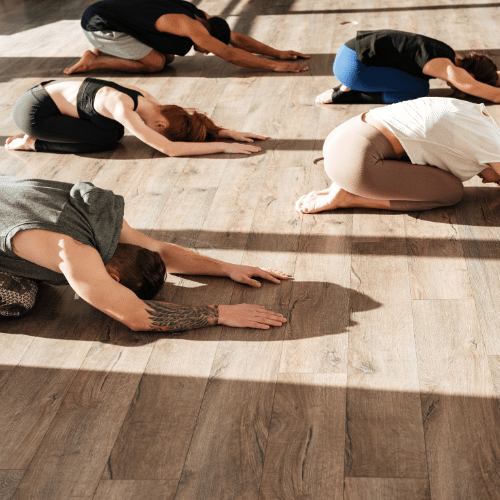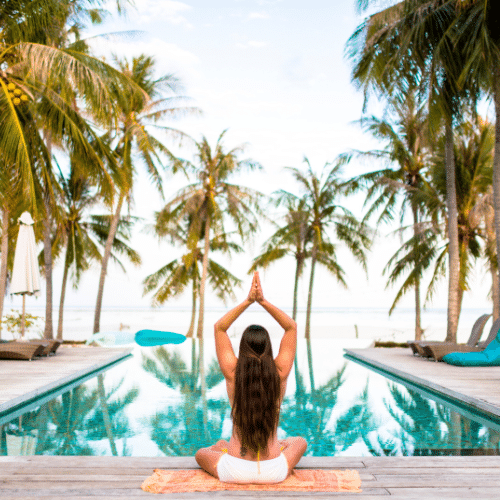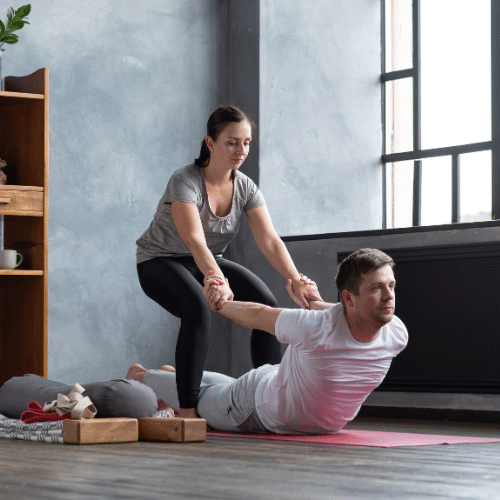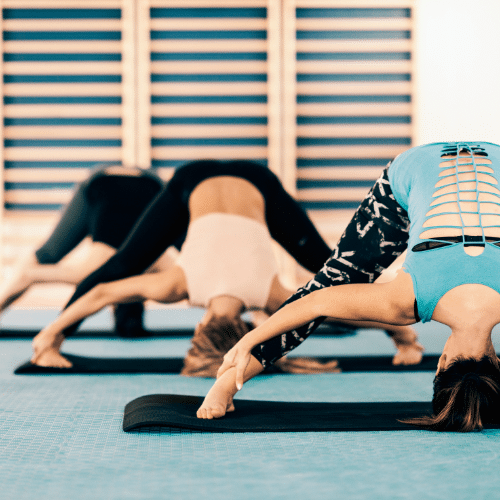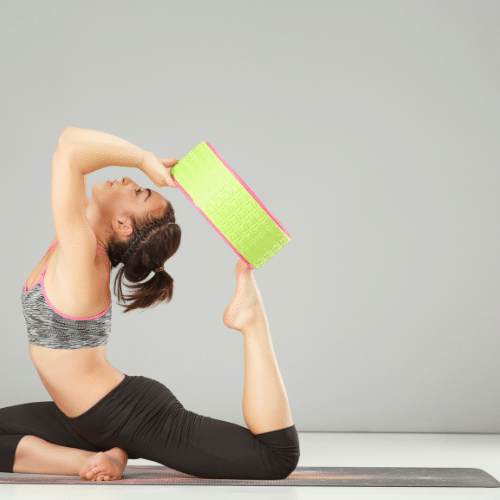Are you looking to add a new yoga pose to your practice that will challenge your balance and strengthen your core? Look no further than half moon pose! This pose, also known as Ardha Chandrasana in Sanskrit, is a beautiful and graceful posture that offers numerous benefits for the mind and body. Whether you’re a beginner or an experienced yogi, incorporating the half moon pose into your routine can help improve your flexibility, focus, and overall well-being.
In this article, we’ll explore the steps to properly perform the half moon pose, along with modifications and variations to suit different levels of flexibility and strength. Whether you’re a beginner looking to enhance your yoga practice or an advanced practitioner seeking a new challenge, this pose is a valuable addition to any routine. So, roll out your mat, find your center, and let’s dive into the world of the half moon pose!
What is Half Moon Pose?
Half Moon Pose, also known as Ardha Chandrasana in Sanskrit, is a challenging yoga pose requiring outstanding balance and core stability. It is a standing pose that resembles the shape of the half moon, hence the name.
Benefits of Half Moon Pose
Half Moon Pose is a challenging yoga pose with numerous mental and physical benefits. This standing balancing pose requires strength, stability, and focus, making it an excellent addition to any yoga practice. Here are some of the key benefits of practicing Half Moon Pose:
1. Improved balance: Half Moon Pose enhances your balance. You can improve your stability and coordination by engaging your core muscles and focusing on proper alignment. This increased sense of balance can extend beyond your yoga mat and into your everyday life, helping you to navigate physical challenges with greater ease and grace.
2. Strengthened core muscles: When practicing Half Moon Pose, your core muscles work together to maintain balance and support your body weight. This includes the muscles in your abdomen, back, and pelvic floor. Regular practice of this pose can improve core strength and stability, helping to alleviate back pain and improve posture.
3. Increased flexibility: Half Moon Pose provides a deep stretch to the leg muscles, particularly the hamstrings and hip joints. With consistent practice, you can gradually improve your flexibility in these areas, leading to increased mobility and a reduced risk of injury. Hip flexibility can also alleviate lower back pain and improve overall posture.
4. Increased focus and concentration: Balancing poses like Half Moon Pose require focus and concentration to find and maintain stability. You can cultivate mindfulness and enhance mental clarity by directing your attention to the present moment and staying present in the pose. This can positively impact your everyday life, helping you stay focused and present in all activities.
5. Energizing and invigorating: Half Moon Pose is a mild inversion, meaning the head is positioned below the heart. This inversion can increase blood flow to the brain, providing energy and invigorating the body. Practicing Half Moon Pose in the morning or during a midday slump can help to rejuvenate and re-energize you for the rest of the day.
6. Improved body awareness: As you practice Half Moon Pose, you become more aware of your body and its alignment. You learn to listen to your body’s subtle cues and adjust to find the proper alignment in the pose. This increased body awareness can translate to better posture, injury prevention, and a deeper connection to your physical self.
Incorporating Half Moon Pose into your yoga practice can offer numerous benefits for the body and mind. Whether you want to enhance your balance, strengthen your core, increase flexibility, or cultivate focus and presence, this challenging pose has something to offer. However, as with all yoga poses, practicing with proper alignment and listening to your body’s needs is essential to ensure a safe and beneficial practice.
Preparing for the Half Moon Pose
Preparing for the Half Moon Pose is essential to ensure a safe and effective yoga practice. This challenging pose requires strong balance, core stability, and proper alignment. Here are some tips and preparatory poses to help you ease into the Half Moon Pose with confidence:
1. Warm-up: Before attempting Half Moon Pose, it’s crucial to warm up your body and loosen any tight muscles. Start with gentle movements, such as neck rolls, shoulder rolls, and twists, to release tension and increase blood flow.
2. Strengthen your core: Since Half Moon Pose heavily relies on core strength, incorporating core-strengthening exercises into your routine is highly recommended. Planks, boat pose, and bicycle crunches are great options for engaging the abdominal muscles and building core stability.
3. Work on balance: Developing a strong sense of balance is crucial for Half Moon Pose. Practicing other balancing poses like Tree Pose and Warrior III can help you cultivate stability and improve your body’s proprioception.
4. Open your hips and hamstrings: Half Moon Pose requires flexibility in the hip joints and hamstrings. Preparatory poses like Low Lunge, Triangle Pose, and Wide-Legged Forward Fold can help stretch and open these areas, making it easier to access the pose with proper alignment.
5. Utilize props: If you’re struggling with balance or finding proper alignment in Half Moon Pose, don’t hesitate to use props. Placing a yoga block under your hand for support or practicing near a wall can provide extra stability and confidence as you work toward mastering this pose.
6. Take it slow and modify: Half Moon Pose is an intermediate pose that may take time to master. Be patient with yourself and listen to your body’s limitations. If you’re experiencing shoulder or hip injuries, modifying the pose using a chair or wall for support or avoiding deep stretches that may exacerbate the condition is essential.
Remember, Half Moon Pose is not primarily about achieving the fullest expression of the pose. It’s about finding the correct alignment, engaging your core, and working within your body’s capabilities. With consistent practice and proper preparation, you can gradually develop strength, flexibility, and balance to enter and hold the Half Moon Pose confidently.
Step-by-Step Guide to Practicing Half Moon Pose
If you’re ready to take on this pose and unlock its many benefits, here is a step-by-step guide to help you practice Half Moon Pose with proper alignment and ease.
1. Start in Mountain Pose: Stand tall with your feet hip-width apart. Keep your spine straight, shoulders relaxed, and engage your core muscles. Take a few deep breaths here to center yourself and prepare for the pose.
2. Ground yourself and extend your left leg: Shift your weight onto your right foot, grounding it firmly into the mat. Engage your leg muscles and find your balance before proceeding. Slowly extend your left leg straight to the side, keeping it active and your toes pointing forward.
3. Align your hips and shoulder: Rotate your left hip externally so it’s stacked on top of your right hip. This alignment is crucial for stability and proper execution of the pose. As you do this, bring your left shoulder directly above your right shoulder, creating a straight line from your left heel to the tip of your left fingers.
4. Find your balance and reach your left arm up: Slowly shift your weight onto your right foot and lift your left leg off the ground. As you do this, simultaneously reach your left arm toward the sky, creating a long line from your left fingertips to your left heel. Imagine lengthening your entire left side, keeping your chest open and proud.
5. Engage your core and open your chest: Activate your core muscles to maintain stability and balance in Half Moon Pose. Draw your navel in towards your spine and lift through your pelvic floor. This engagement will create a strong foundation for the pose. Additionally, open your chest by drawing your shoulder blades down your back and broadening across your collarbones.
6. Gaze forward or up, depending on your balance: Find a focal point in front of you to steady your gaze and help maintain your balance. If you feel stable, you can challenge yourself by slowly turning your gaze toward your left hand, deepening the backbend in your upper body.
7. Hold the pose and breathe: Stay in Half Moon Pose for 3-5 breaths, focusing on your breath and maintaining a steady, even flow of air. As you inhale, imagine lengthening your spine and finding expansion. With each exhale, ground down through your supporting leg and find stability.
8. Release the pose with control: To come out of the pose, release your left arm and slowly lower your left leg back to the ground. Return to Mountain Pose and take a moment to notice the effects of Half Moon Pose on your body and mind.
Remember, Half Moon Pose is a challenging posture that requires practice and patience. Don’t be discouraged if you’re unable to achieve perfect alignment or balance right away. With consistent effort, you’ll gradually improve and reap the many benefits of this energizing and empowering yoga pose.
Modifications and Variations of Half Moon Posture
Half Moon Pose is a challenging pose requiring balance and core stability. However, it can also be modified to accommodate different body types, flexibility levels, and injuries. Here are some modifications and variations of Half Moon Pose that can make the posture more accessible and enjoyable for everyone.
1. Use a yoga block: If you have tight hamstrings or limited flexibility, placing a yoga block under your bottom hand can help bring the floor closer to you. This modification lets you maintain proper alignment while experiencing the pose’s benefits. Simply place the block at a height that feels comfortable and supportive for you.
2. Use a wall for support: For beginners or those with balance challenges, performing the pose with the aid of a wall can be very helpful. Stand next to a wall with your left side facing it. Place your left hand on the wall for stability as you extend your left leg to the side and reach your right arm up. The wall acts as a guide, allowing you to focus on alignment and balance without fearing falling.
3. Use a strap for support: If you have a shoulder injury or tight shoulders, a yoga strap can help you reach your arm overhead without straining or compromising your shoulder joint. Hold one end of the strap with your left hand and extend your arm overhead, allowing the strap to support your shoulder and create space.
4. Perform a modified Half Moon variation: If you find it challenging to balance on one leg, you can adjust the pose by bending your standing knee slightly. This modification provides extra stability and reduces the demand on your leg muscles. It lets you focus more on opening your chest and finding length in your side body.
5. Explore different arm variations: Instead of reaching your top arm straight up, you can experiment with different arm variations to add variety and challenge to the pose. For example, try extending your top arm forward in front of you, creating a diagonal line with your leg. This variation emphasizes core strength and engages your upper shoulder muscles.
6. Add a backbend: If you have a flexible spine and enjoy mild inversions, you can deepen your Half Moon experience by adding a gentle backbend. As you reach your top arm up, allow your gaze to follow, gradually turning your head toward your left hand. This modification increases the stretch in your chest and shoulders while activating your back muscles.
Remember, modifications are not a sign of weakness but tools to help you make the most of your practice. Whether you’re a beginner or an experienced yogi, Half Moon can be modified to suit your body and needs. Always listen to your body, honor its limitations, and approach the pose with patience and self-care.
In conclusion, the half moon yoga pose is a powerful and transformative posture that can bring balance, strength, and flexibility to your practice. As you gracefully find your balance and extend your body into the shape of a crescent moon, you’ll feel a sense of harmony and serenity wash over you. Embrace the beauty of this pose, and let it guide you on a journey of self-discovery and inner peace.


